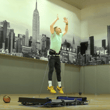This volleyball training program guide will help any age and any level athlete prepare themselves for their athletic career and achieve volleyball results. The guide will also help any parent understand what’s involved in developing the total athletic development of volleyball athletes.
It takes a lot of practice, determination and ability to be a great volleyball player. Playing volleyball isn’t enough if the athlete desires to be one of the best. I’m going to repeat that. Playing volleyball all year long isn’t enough to be a great volleyball player. An athlete needs to train for volleyball as well as cycle-off a training program and playing. Simply put, the athlete needs to prepare the body for the rigors of the sport and they can do this with a detailed volleyball training program for athletic performance.
This volleyball training program guide starts with common injuries in volleyball and understanding why volleyball athletes should be in the weight room by following five principles. Followed by considerations when assessing and screening the athlete prior to introducing them to a structured volleyball training program, and then brings awareness to the tools needed to strength train volleyball athletes with progressive development and periodized programming, as well as other considerations when training volleyball athletes for total athletic development.
After learning the volleyball training program basics see more Volleyball Training info here.
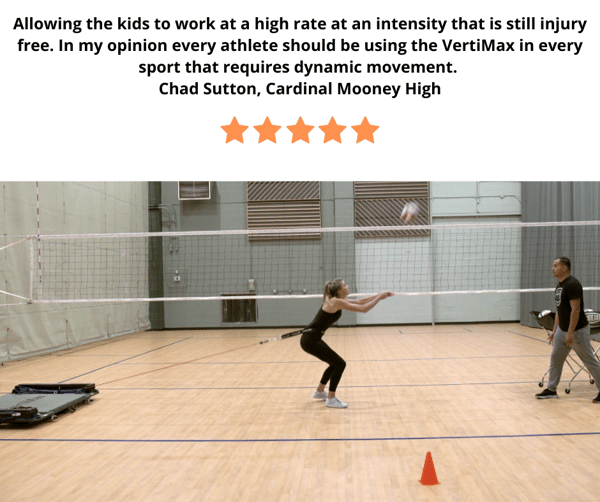
5 Principles of a Volleyball Training Program
Any physical preparation for a volleyball athlete training program should be started by applying these five principles of training to keep the athlete healthy, robust and ensure volleyball performance improvement.
These 5 principles are very important for beginner volleyball athletes to avoid Injuries. Weight training helps player to avoid injury and stay on court for the long term.
A proper volleyball training program that includes weight training can help with injury prevention. According to sports medicine specialist, Dr. David Geier the most common injuries he sees in his volleyball athletes are ankle sprains, patellar tendinitis (jumpers knee), ACL injuries (knee injury), finger injury, shoulder injury and lower back pain (1). Most of these injuries are due to over use of the specific tendon and ligament, lack of strength in the athlete, as well as the athlete over playing and not taking an off season from the sport.
-
Principle 1 - Develop and Maintain Mobility of the Joints
Good mobility of the joints prevents strain and pain around the joints. Volleyball is a sport with a great number of jumps and changes of direction. Mobility in upper and especially lower limbs is critical for shock absorption. Dysfunctional joints lead to compensatory movement patterns which sooner or later leads to micro trauma of the tissues and stress. Furthermore, if the player lacks mobility, his or her force production could be significantly impaired.
-
Principle 2 - Develop Strength of Tendons and Ligaments
Tendons connect muscle to a bone and transmit force from muscle to bone so that a movement can occur. It also stores elastic energy which is very important for jumping, rebounding or any other ballistic activity. Ligaments attach the bone to each other across the joint. Strength of ligaments are very important when high load is applied as in landing a jump. Even though tendons and ligaments are trainable, most physical preparation programs seem to lack attention to strengthening it.
-
Principle 3 - Develop Strength of the Core
According to McGill, “Muscles of the core are crucial for volleyball athletes as it shows high activation during jumps, plyometric exercises and other explosive movements (2). Even though the core is not a power generator, it plays a crucial role transmitting power generated in the hips”. Weak and unstable core musculature would mean impaired power transmission which would lead to weaker performance. For example, during spiking in volleyball, the core muscles contract to stabilize the trunk so that the legs can perform explosive takeoff and the arms hit the ball.
-
Principle 4 - Develop Stability
Maintaining body integrity and balance within the base of support in both static and dynamic conditions is very important. If the volleyball player loses balance, all further actions of the player are most likely to be impaired until body control is regained. In the sport of volleyball, where a vast amount of jumps and changes of direction occur; stable ankles, knees, hips and core are the pillars of transfer force throughout the body. Kugler says, “Weak stabilizers of the shoulder joint are often seen in volleyball players who suffer shoulder injury” (3).
-
Principle 5 - Focus on Movements and Not Individual Muscles
The strength training in sports is strongly influenced by the discipline of bodybuilding and its methodology. However, even though bodybuilding type of training can be helpful for a volleyball player to some extent; functional strength training covers a much broader perspective. Athletic skills in volleyball such as jumping or change of direction are multi-point movements performed in certain order. For instance, to take off the ground for a volleyball spike, the power is transmitted through hip extensors, then knee extensors, and finally ankle extensors. This powerful sequence is called triple-extension. Simply put, when athletes train for movement the muscles are strengthened to perform action with more power.
Volleyball performance is very much dependent on the player’s specific skills and the coach’s ability to teach and apply the most effective training methods in accordance with the player’s weaknesses and needs. However, for optimal physical performance, implementing these five principles serves as an excellent way of developing athletic and skillful players.
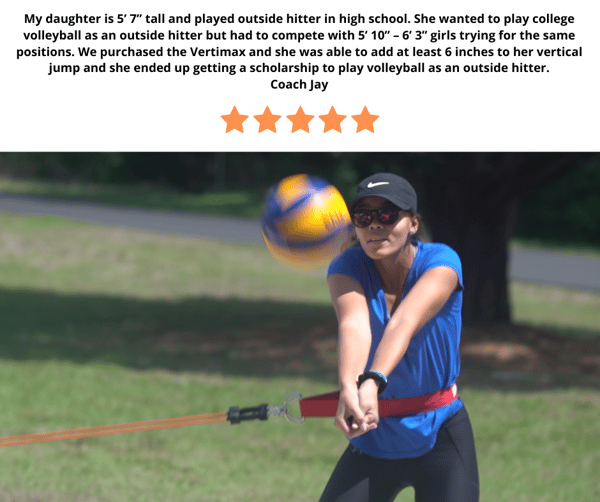
Recommended Volleyball Training Equipment
What equipment do you need to train athletes for volleyball? Besides the standard sport equipment such as a ball, net, shoes, etc. These recommendations will include the equipment needed to make the athlete stronger and faster. For new and young athletes with no training experience in the weight room I highly recommend a volleyball training program that only includes body weight training. As the athlete gets stronger I then suggest adding a squat rack, barbell, weight plates, dumb bells, medicine balls and various levels of resistance bands. These tools will help the athlete add resistance to their body movements to make them stronger and more prepared for the sport of volleyball.
- The Assessment or Screen
The athlete readiness assessment or movement screen is a basic assessment that can be as easy or detailed as you want it to be. Some will argue you need a full FMS (Functional Movement Screen) and others will argue any test can be passed. I recommend an easy screen or assessment that you can create or do that will give you an idea of how the athlete performs basic movements such as the squat, lunge, push, pull, hinge, twist, and gait. The assessment will make sure the athlete is prepared for a resistance training program which includes lifting weights, speed and agility drills, and mobility drills. For more information why you need or should do an assessment read here "Whey a Movement Assessment is Important"
Every athlete has or had its own movement limitations and this guide will assume that the athlete can move and complete proper movement patterns with proper form. If an athlete has any movement limitations I highly recommend a training regiment that starts with mastering the basics. Here is an article that will point any new athlete to resistance training in the right direction, "Are You Building or Breaking Athletes?"
- Progressive Development
A progressive development training program will start the volleyball athlete by using their own body weight to develop strength. This will help develop an excellent strength-to-weight ratio and will teach the athlete to control their own weight across all planes of motion. A volleyball training program should start with training to increase relative strength as well as programming that helps the athlete have body control. When volleyball athletes are on their court it’s crucial they understand how to properly jump and have proper landing mechanics.
- Periodized Programming
According to Verkhoshanksy, “Periodization is defined as the “long-term cyclic structuring of training and practice to maximize performance to coincide with important competitions” (4). Basically, it’s a program design strategy with systematic variations in training specificity, intensity and volume. If designed properly it will help the athlete peak athletic ability during their competitive season. When athletes are in the weight room they can’t be constantly trying to max out the weight training. There needs to be a system that incorporates rest and manages fatigue as well as manages load (amount of weight) and intensity (repetitions). When relating to volleyball athletes a good path to follow would be to beak the training down into four phases such as early pre-season, late pre-season, in-season, and off-season. Each phase will have its own athletic or fitness goal such as aerobic fitness, functional strength, hypertrophy, explosive power, maximum strength, and speed.
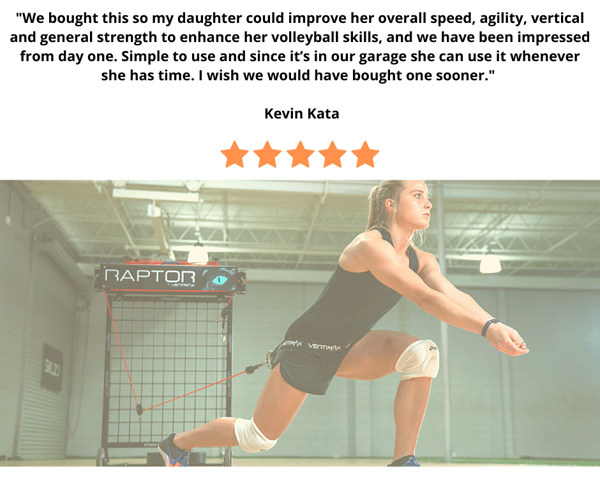 Other Volleyball Recommendations
Other Volleyball Recommendations
1. Plyometrics
Going along with your volleyball training strength program, plyometrics are a very effective form of power training to help volleyball athletes increase vertical jump and increase explosive power on the court. In simpler form, plyometrics is jump training, but not just straight up and down. Plyometrics include explosive jump movements that move side-to-side, twisting, etc. Plyometrics will stimulate fast-twitch muscle fibers which allow athletes to generate force quickly and efficiently. Plyometrics are a very important piece for any volleyball training program, but should only be implemented if the athlete has a base of strength and body control. Check out the volleyball drills for defense.
2. Every Athlete is Different
Every athlete will have their own strengths and weaknesses which is why a workout for volleyball players needs to be individualized. A majority of athletes will all be in the same phase of their workouts; unless they’re injured. An example of individualization may be that an athlete has a weak squat so instead of loading a barbell they me only squatting with a kettlebell. Or if an athlete has shoulder issues you’re not going to want them doing any overhead lifting if the required workout includes shoulder strength training. You have to assess your athletes throughout the course of their entire career and program accordingly. When it comes to strength training it's not as easy as writing a workout on a white board and having all athletes training the same.
3. Recovery and Rest
Recovery and rest for volleyball athletes are very important for gaining strength and power. Some of the best ways to recover from volleyball training are sleep, hydration, massage, and continuing to stay active even on rest days. Staying active on rest days can include walking, yoga, and a light workout. Other factors to help recover include eating right, massage, stretching and ice.
4. Recommendations for Parents and Coaches
Parents, find your son or daughter a sports performance or strength and conditioning coach that understands how to assess, program, and coach your child. It’s important that your volleyball athlete properly trains for volleyball off the court and in the weight room. A program tailored to an individual athlete that focuses on building strength and mobility will help the athlete in their athletic career. Coaches, please understand the importance of strength training. There are numerous facilities and private strength coaches that would be happy to service your athletes if your school doesn’t have a strength and conditioning coach.
Volleyball training is more than just being on the court practicing or playing games all year round. Ask any qualified successful or long time volleyball athlete and they will talk about how their success in the weight room positively impacted their athletic career. There is a lot to understand about what goes into the development of volleyball athletes such as assessments, periodized programming, progressive development, plyometrics, recovery and understanding that every athlete requires an individualized program. If I can get any point across it would be that your kids shouldn’t be playing volleyball all year round if they want a long and reduced injury career. High schools should hire a qualified strength and conditioning coach, parents allow your children to rest, recover and get them to a sports performance facility.
- Geier, D. 2019. drdavidgeier.com. 6 Common Volleyball Injuries.
- Verkhoshansky, Y., “Sport Strength Training Methodology”. Comment on Magnush. 2007
- McGill, S.M., 2010. Core training: Evidence translating to better performance and injury prevention. Strength and Conditioning Journal, 32(3), 33-46.
- Kugler, A., Kruger-Franke, M., Reininger, S., Trouillier, H.H., and Rosemeyer, B. 1996. Muscular imbalance and shoulder pain in volleyball attackers. British Journal of Sports medicine 30 (3): 256-59

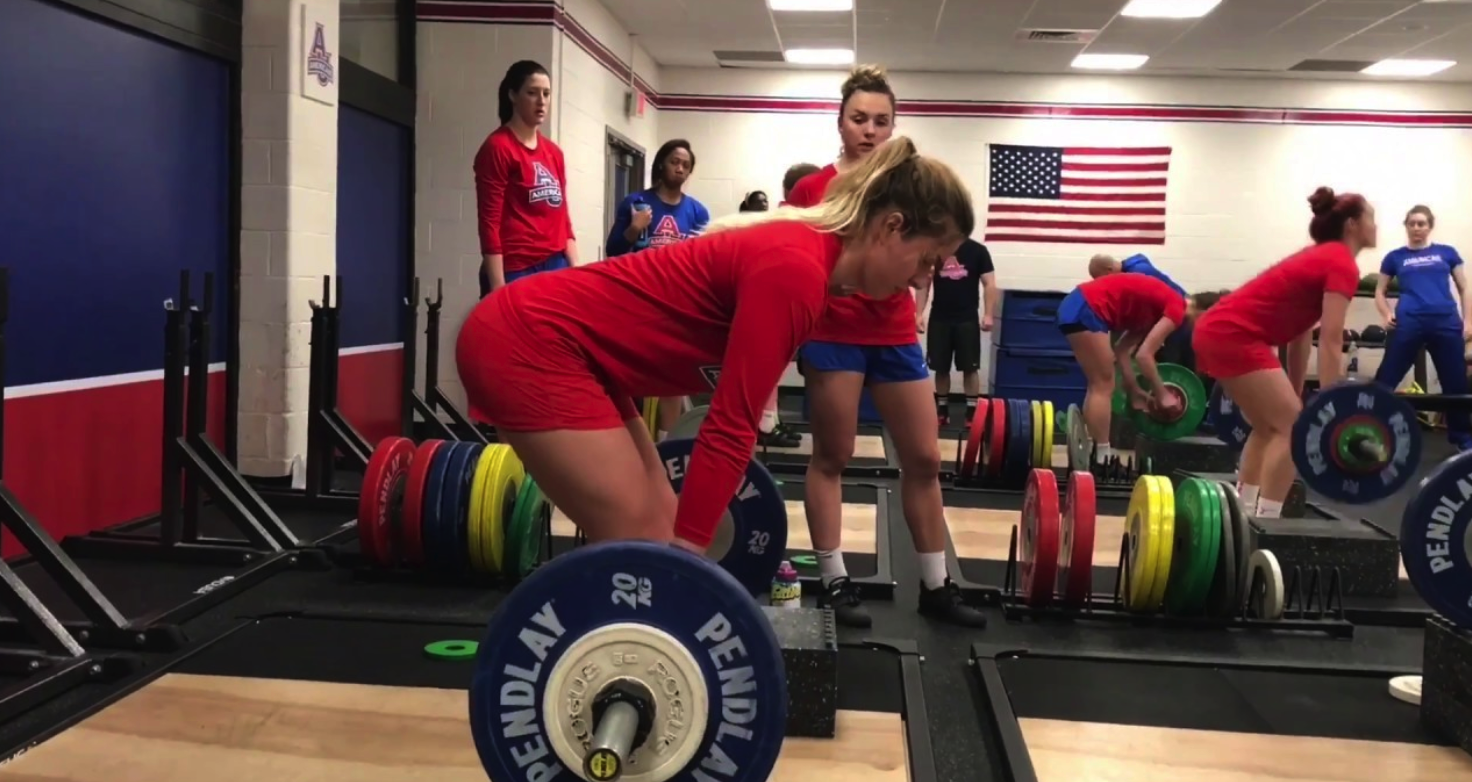
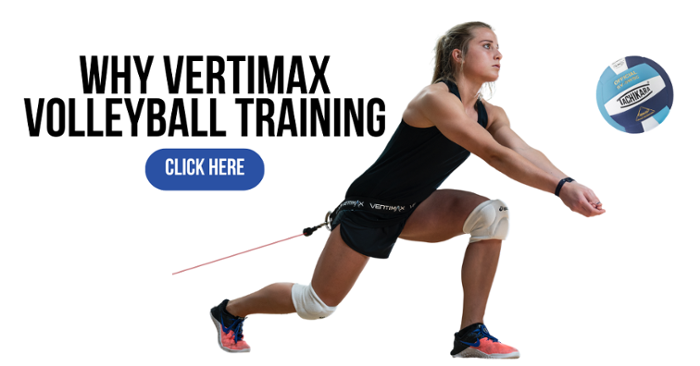


.png?width=110&name=Listing%20Image-basketball%20ladder%20drill%20%20(350%20x%20350%20px).png)
